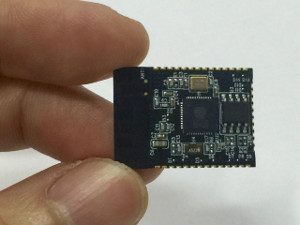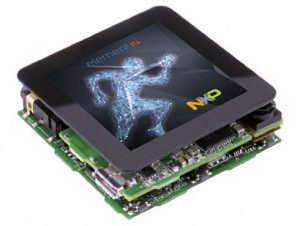LX lives and breathes the Internet of Things, so when we were approached by CommBank to collaborate in a one-of-a-kind experiment which would see Australia’s largest bank dip their toes in the vast pool that is IoT, we were more than a little excited. The experiment would incorporate the Internet of Things and blockchain technology throughout the supply chain for one of Australia’s leading orchards and demonstrate just how powerful these rapidly developing fields can be for business. It was our chance to show the world just what LX could do in this emerging space, and how our bread and butter – the Internet of Things – along with blockchain technology can influence every stage of the supply chain for the better.

Of course, for technology boffins like our engineers, the IoT and blockchain need little explanation. But for the rest of the business world, the understanding of these potent technologies is limited, to say the least. Taking part in the CommBank experiment would help LX and the other collaborators explain the potential for these technologies in real-world terms.
The experiment
CommBank’s Innovation Lab was keen to investigate how the global supply chain could be improved using these advanced technologies for end-to-end solutions. The Innovation Lab’s assessment determined that enhanced visibility and accountability throughout the supply chain was key to improving business.
Bringing together a range of experts in trade, banking, and technology to collaborate on this investigation, it was dubbed the Trade-chain Experiment. The process would see a shipment of almonds from Olam Orchards Australia – fitted with sensors to measure both temperature and humidity as well as cellular network tracking – make its way from Victoria to Germany via rail and sea networks. The produce would change hands between 5 independent companies along the way, and the experiment hoped to allow these firms to work together, enhancing visibility, thanks to IoT and blockchain technologies.
According to CommBank, “The transported goods are given a unified, secure record of their whereabouts, which can be checked via a web app at any time. This results in smarter planning and potential cost savings throughout the supply chain.”
The supply chain could use a shake-up
“This shake-up of the supply chain is about fairness. It’s saying, when the product leaves my place, it’s in a certain condition. If something happens during delivery, the supply chain takes that cost. The customer doesn’t pay for mistakes made along the way, and it incentivises the supply chain to be more efficient and accountable.” Simon Blyth, Director, LX Group.
Trust is at the heart of any supply chain, and yet the process often lacks transparency. Both suppliers and the end consumer are at the mercy of the middle-men and their ability to deliver a product on time and in an acceptable condition.
Olam, one of the world’s largest almond producers, faces hurdles throughout their supply chain which have consequences in terms of time to market, product quality, and most importantly, costs and reputation. In real terms, a large shipment of almonds from Australia to Germany changes hands several times throughout its journey. The temperature and humidity within the containers carrying the produce is critical for the quality of the product once it reaches its final destination. The lack of transparency in the supply chain means that accountability for damage or reduced quality is often hard to determine. For producers like Olam, this can mean a reduced price for their product and can affect their relationships with buyers.
Whilst the global supply chain is committed to adopting new technologies and enhancing accountability, there’s no doubt that the industry is overdue for a shake-up. Revolutionary technologies like IoT and blockchain have the capacity to disrupt existing logistics practices, through enhanced transparency, increased efficiencies, and never-before-seen responsiveness.
LX Group and the Internet of Things
“The international trading system has come a long way, and today we have technologies that have the potential to allow all parties in a supply chain to trust each other with fewer intermediaries and costly documentation,” CommBank Trade-chain Experiment.
Anyone with an interest in technology has heard the term ‘Internet of Things’. At LX, it’s our entire focus – bringing cutting edge IoT products to market and solving business problems in ways that were not previously possible, or perhaps even known. However, even now, we’re only scratching the surface in terms of applications for IoT. CommBank’s Trade-chain Experiment is giving both the Australian and international markets a peek at what’s possible by incorporating IoT devices with blockchain technology.
 The connected world made possible by IoT allows us to create measurable solutions for business, helping them to better manage their assets, assign accountability, efficiently manage contracts and make better decisions. Keeping the transport operators accountable for the condition of stock by using smart contracts is one key element to the advantage of IoT and blockchain technology. It allows suppliers to automatically apportion the costs of damaged or quality-affected stock to those responsible and ensure their margins are maintained. It also means that the end consumer isn’t lumped with paying a premium for a product of reduced quality, in the event of an issue with transporting the stock. Not only does this keep costs under control for suppliers and the end consumer, it incentivises transport operators to maintain the highest standards of service.
The connected world made possible by IoT allows us to create measurable solutions for business, helping them to better manage their assets, assign accountability, efficiently manage contracts and make better decisions. Keeping the transport operators accountable for the condition of stock by using smart contracts is one key element to the advantage of IoT and blockchain technology. It allows suppliers to automatically apportion the costs of damaged or quality-affected stock to those responsible and ensure their margins are maintained. It also means that the end consumer isn’t lumped with paying a premium for a product of reduced quality, in the event of an issue with transporting the stock. Not only does this keep costs under control for suppliers and the end consumer, it incentivises transport operators to maintain the highest standards of service.
IoT and blockchain work together to bring efficiency to the supply chain – minus the hassle, costs, and delays associated with enforcing complex legal frameworks. LX Group Director, Simon Blyth explains:
“There might be four or five different businesses taking stewardship of stock throughout a delivery. There may be multiple trucking and shipping companies across multiple countries and legal jurisdictions, and there’s a lot of money at play. Not only is there the opportunity to apportion risk using smart contracts, there’s also simply a lot of inefficiency in filling out paperwork and room for human error.
“If you’re providing fresh produce to a large FMCG and you know the temperature wasn’t quite right, you can deduct from the courier company a percentage of their rate as a penalty. That incentivises the supply chain to take real responsibility and accountability and improve the quality of service. You don’t have to go through these clunky legal systems to solve disputes.”
As a firm with over a decade’s experience in designing and creating IoT devices, LX is at the cutting edge of the IoT revolution.
“We build world-class products to compete on a global stage in high volumes. Where that fits in with blockchain and IoT is that, over a decade ago, we knew everything is going to be wireless. The key to adoption was ultra-low power, long battery life, low unit cost, and smaller units. So, we got really good at that type of product, and that became IoT. We strive to understand this kind of technology from every single angle. We are investing in these things because we have a good idea of where technology is heading next. That’s why we were so excited to be a part of this project. We see the intersection of IoT + blockchain + AI to be one of the next big technology waves”. Says LX Group CEO, Adam Schindhelm.
For the tech nerds in the room: The details
“I don’t believe we have seen innovation like we have in the last few decades in the entirety of human existence. The rate of innovation & technology change has gone exponential. IoT, blockchain and AI are going to be a big part of where we go next.” – Adam Schindhelm, CEO, LX Group.
The majority of LX’s deployments fall under the categories sensing and tracking. CommBank approached LX to provide four sensors for the experiment, which would measure the temperature and humidity inside the shipping containers transporting Olam’s almonds. Furthermore, we provided tracking devices which operated using cellular trilateration to monitor the shipment’s whereabouts.
The devices LX supplied were built around a low power ARM Cortex M3 microcontroller, running predominantly in ‘deep sleep mode’ so as to maintain a battery life in excess of 60 days. This ensured that the complete journey of the goods could be tracked from the container loading at Mildura, to the transport by rail to the port, then loading on to ships to travel across two oceans, and finally unloading at the destination in Germany.
Hourly environmental sensing inside the container was achieved with a Bosch low power temperature and humidity sensor, and a cellular modem provided both network connectivity and location sensing via cell tower trilateration.
Each hourly sample of environmental conditions and location data was pushed from the device to the LX IoT Cloud, along with diagnostic information including battery level, RSSI, unique identifiers and timestamps. LX IoT Cloud is a powerful IoT platform built upon Microsoft Azure that aggregates sensor and tracking data and provides a rich API to integrate with the Ethereum based blockchain solution for the experiment.
At each stage through the data chain, packets are secured and encrypted, right from the initial sample on board the device, through cellular communications, LX IoT Cloud integration, and then pushing on to the block chain transactions and dashboard displays.
The experiment was a tremendous success for all involved. Together with CommBank and its other collaborators, LX has helped demonstrate the value of IoT and blockchain to business – and in more ways than one. The possibilities now are almost endless.
A final word from Simon on the Trade-chain Experiment:
“This experiment in particular excited me because people had started saying that blockchain would one day be bigger than the internet. Now, that’s a pretty big claim to make. I don’t know how you’d ever measure that. But, when you start to realise the extent to which blockchain can be used to enhance business, it’s actually not such a crazy idea. The more I thought about it the more applications I could see it being used for. From everything to small changes in how we currently do things today through to an entire machine to machine economy.
“For LX, the Internet of Things is part of a bigger picture of change. Akin to when the first transistor was built, we had no idea just how far that would go. And now look at the world we’re living in, with supercomputers in our pockets. LX sees IoT and blockchain really having the potential to change businesses everywhere, for the better.”






 The community surrounding the Arduino platform is one of its defining characteristics, and the Arduino Project Hub integrated into the Arduino Create system aims to continue this community-oriented tradition.
The community surrounding the Arduino platform is one of its defining characteristics, and the Arduino Project Hub integrated into the Arduino Create system aims to continue this community-oriented tradition.